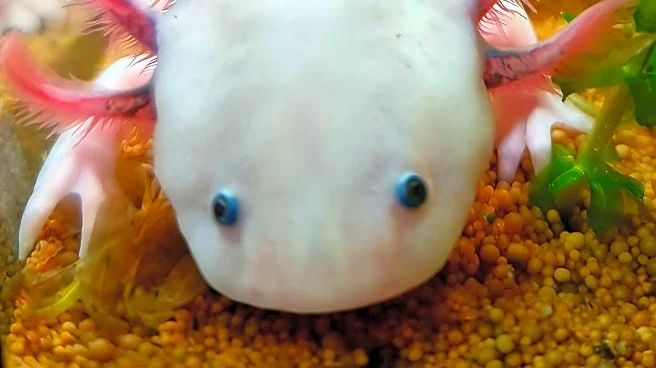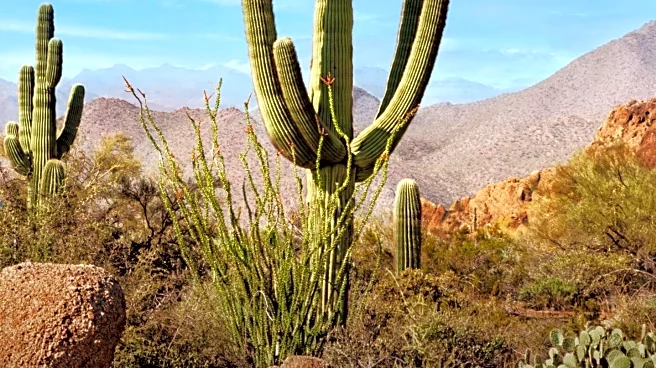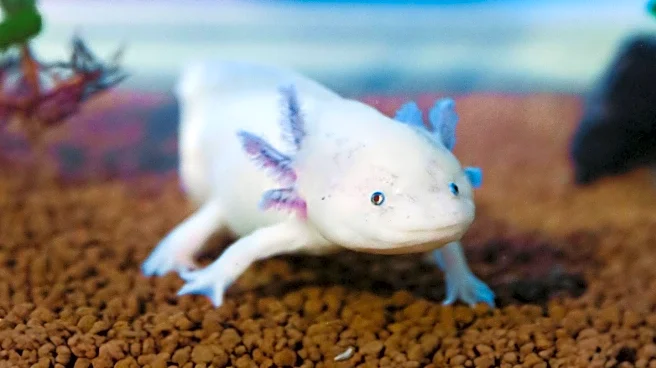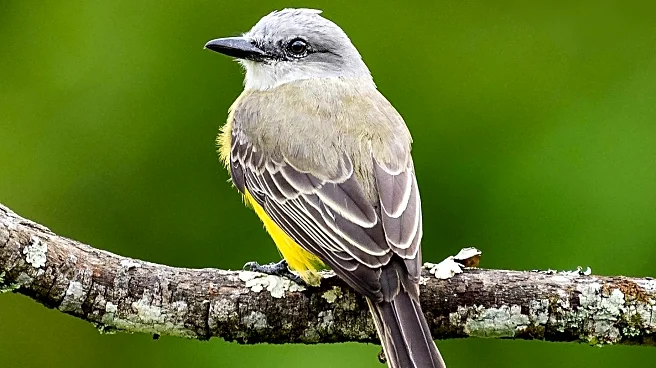What is the story about?
What's Happening?
Axolotls, the amphibious salamanders native to Mexico City, have become a popular subject in children's literature. Known for their distinctive appearance, including wide-mouthed smiles and frilly side gills, axolotls have gained cultural prominence since being classified as endangered in 2006. Their popularity surged with appearances in media such as Squishmallows and Minecraft, leading to their inclusion in various cultural symbols like Mexico's 50 peso note. Publishers have responded to this trend by releasing numerous axolotl-themed books, including picture books, board books, and early readers. Capstone's Picture Window and Stone Arch imprints have launched several titles featuring axolotl characters, while authors like Joey Spiotto and Jen Hitchman have incorporated axolotls into their stories, highlighting their unique traits and endangered status.
Why It's Important?
The axolotl trend in children's literature reflects a broader cultural fascination with unique and endangered species, fostering awareness and empathy among young readers. By featuring axolotls in engaging narratives, publishers are not only capitalizing on their popularity but also educating children about conservation issues. This trend may inspire future generations to take an interest in environmental protection and biodiversity. Additionally, the axolotl's appeal lies in its ability to evoke human emotions, making it relatable to children and adults alike. As these books gain traction, they could influence the publishing industry to explore more diverse and educational content, potentially impacting public perception and policy regarding endangered species.
What's Next?
The axolotl craze shows no signs of slowing down, with more titles set to launch in 2026. This continued interest may lead to further integration of axolotls into educational materials and cultural products, potentially expanding their role in conservation efforts. As publishers and authors explore new ways to incorporate axolotls into their stories, they may also seek collaborations with environmental organizations to promote awareness and action. The sustained popularity of axolotls could encourage other industries to leverage their appeal, possibly influencing merchandise, media, and educational sectors.
Beyond the Headlines
The axolotl's rise in popularity highlights the intersection of culture, education, and conservation. As a symbol of biodiversity, axolotls may inspire ethical discussions about human responsibility towards endangered species. Their portrayal in literature could lead to a deeper understanding of ecological issues, encouraging readers to consider the impact of human activities on natural habitats. This cultural moment also underscores the power of storytelling in shaping public attitudes and fostering a sense of connection with the natural world.
AI Generated Content
Do you find this article useful?













